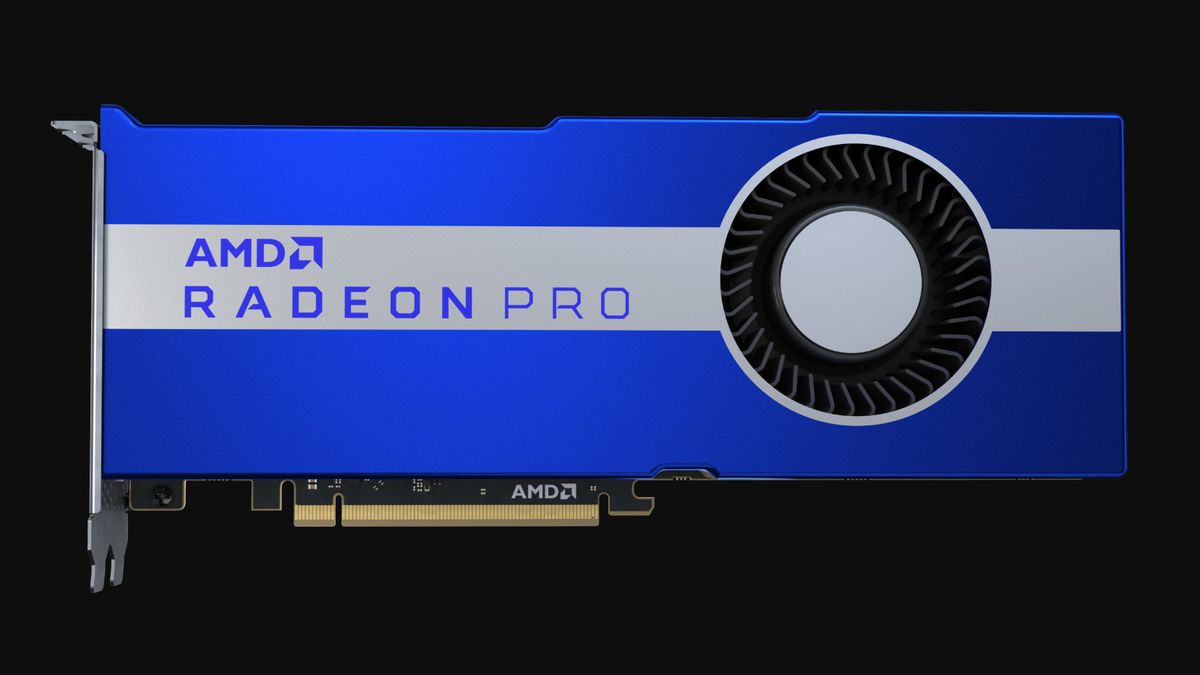AMD threatens to wreck Nvidia’s launch party with monster graphics card release
Radeon Pro VII pops out of nowhere – and it’s a heavyweight powerhouse

AMD has just revealed its new Radeon Pro VII graphics card, and has timed this launch to coincidentally happen the day before Nvidia makes its big GTC Ampere reveal on YouTube.
The Radeon Pro VII is aimed at the likes of broadcast professionals, CAD and CAE (computer-aided engineering simulations) and high-performance computing in general.
The name of the workstation GPU may sound familiar, and that’s because AMD released a Radeon VII card in the past, and like that product, it remains based on AMD’s Vega 20 GPU (which is 7nm – but this was AMD’s first foray on that process, before the release of Navi cards).
- AMD Ryzen Pro 4000 vs Intel vPro battle heats up
- HPE chooses AMD to power El Capitan supercomputer
- These are all the best graphics cards of 2020
However, even if the technology employed isn’t exactly fresh, the performance on offer is definitely eye-opening.
Headline specs include 60 compute units (3,840 stream processors) with Peak Single Precision (FP32) performance pegged at 13.1 TFlops and Peak Double Precision (FP64) hitting 6.5 TFlops. There’s 16GB of HBM2 video memory with a memory bandwidth of 1TB/s and support for PCIe 4.0.
AMD has also brought in its Infinity Fabric Link, meaning you can hook up a pair of these Pro VII GPUs with a bridge and benefit from a high-bandwidth, low latency connection, and memory sharing – better multiple graphics card performance all round, in other words.
The card has six Mini-DisplayPorts (1.4) so you can connect and drive six Full HD monitors, or indeed a single 8K display.
Are you a pro? Subscribe to our newsletter
Sign up to the TechRadar Pro newsletter to get all the top news, opinion, features and guidance your business needs to succeed!
Crushing 8K
Compared to an Nvidia Quadro RTX 5000 graphics card, the new AMD GPU delivers up to 26% faster 8K image processing performance in Blackmagic Design DaVinci Resolve, according to AMD’s testing.
AMD is selling the Radeon Pro VII as the “new standard for crushing 8K broadcast content and complex CAE simulation workloads, without crushing the budget”, and as you might expect, it is priced competitively (for a workstation GPU, that is).
The graphics card is pitched at $1,899 (around £1,550, AU$2,950) and is expected to be available from the middle of June. The unknown factor is exactly what Nvidia will be launching tomorrow in terms of next-gen Ampere heavyweight offerings, but clearly, AMD is hoping to pre-emptively remove at least a bit of the wind from its rival sails (or indeed sales).
- Best workstations of 2020: top powerful PCs for pros
Darren is a freelancer writing news and features for TechRadar (and occasionally T3) across a broad range of computing topics including CPUs, GPUs, various other hardware, VPNs, antivirus and more. He has written about tech for the best part of three decades, and writes books in his spare time (his debut novel - 'I Know What You Did Last Supper' - was published by Hachette UK in 2013).















